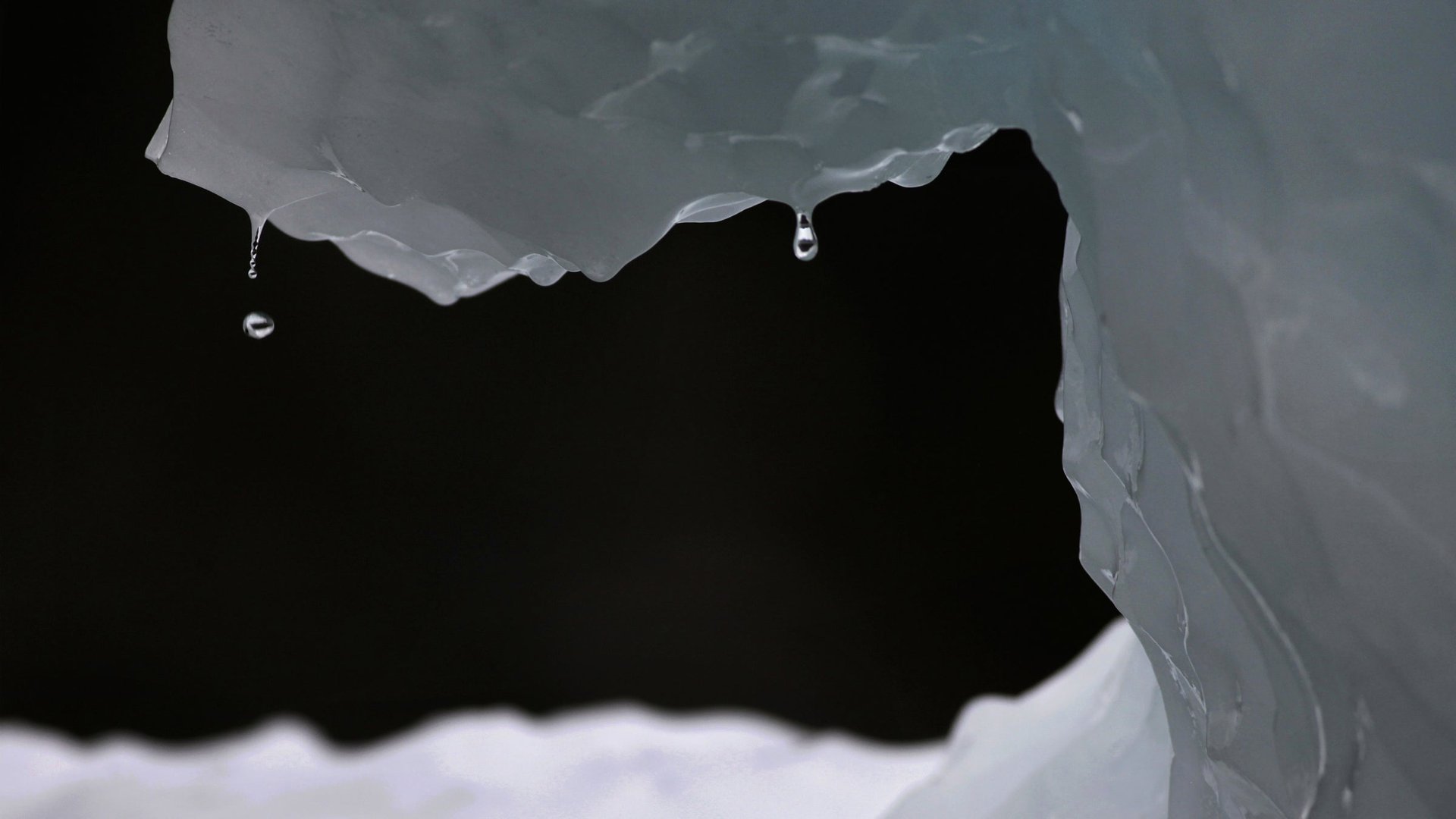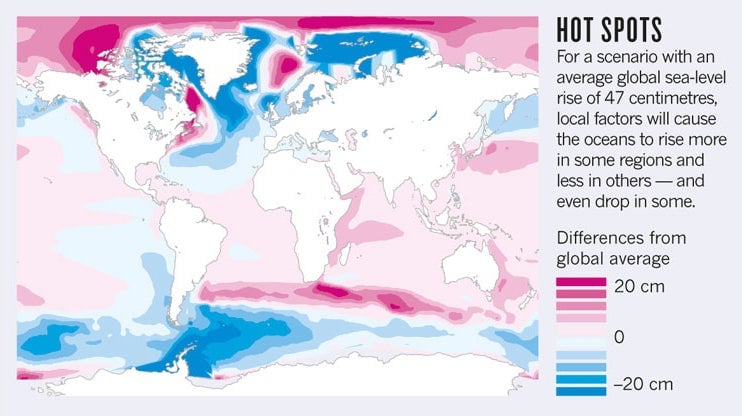Global warming is causing Alaska to rise and Boston to sink
Climate-change skeptics can always seize on some inconvenient truths about the effect of human carbon consumption on sea levels. On average, the ocean rises only a wee 3.2 millimeters (0.13 inches) a year—about the length of a small black ant. And, in places like Alaska and Canada’s Hudson Bay, sea levels are actually dropping up to 3 centimeters (1.3 inches) a year.


Climate-change skeptics can always seize on some inconvenient truths about the effect of human carbon consumption on sea levels. On average, the ocean rises only a wee 3.2 millimeters (0.13 inches) a year—about the length of a small black ant. And, in places like Alaska and Canada’s Hudson Bay, sea levels are actually dropping up to 3 centimeters (1.3 inches) a year.
Still, next week the big kahuna in climate-change research, the Intergovernmental Panel on Climate Change (IPCC), will announce that overall sea levels could rise by as much as 97 centimeters (3.2 feet) by 2100, according to Nature, which saw a leaked report. In 2007, it projected a maximum rise of only 59 cm. (The lower limit of its estimate went up from 18 to 28 cm.)
But skeptics shouldn’t dismiss the finding. As Nature explains, the new model accounts for all of the factors causing rising seas, while the IPCC’s 2007 calculations were based on factors that explained only 60% of them. And many of those are exactly the same factors causing water to swell in, say, Mississippi while it recedes in Canada’s Hudson Bay.

The 40% hole in IPCC’s old model
In the 2007 estimate, the main factors in the oceans’ rise were the expansion of the water due to warming, and the melting of glaciers. About a sixth of the increase also came from the melting of Antarctic and Greenland ice sheets. The IPCC’s latest model includes other factors. For instance, after humans suck fresh water up from the ground, they pump it into the ocean. Intensive use of water for aquaculture, for example, is causing sea levels around China’s Yellow River delta to surge around 25 centimeters a year.
Ice sheets: frozen floods in the making
The IPCC also changed its thinking on the impact of melting ice sheets. That added 21 cm to its maximum projection for 2100 sea levels. The big variable is the rate of melting, since the ice sheets hold enough water to boost sea levels by 65 meters (213 feet) if they were to melt entirely.
Besides pouring water into the sea, the melting of the ice caps takes weight off the upper part of North America. This has two effects: that part of the continent sticks up higher out of the water, so the islands of Graves Harbor, Alaska, now form a peninsula. And the continent as a whole tilts, so parts further down the US east coast—such as Boston—sink lower in the water.
Gravity will send seas surging southward
This tilting effect is exacerbated by another, separate consequence of melting. The ice sheets of upper North America and Greenland are so massive that their gravitational pull yanks the oceans toward them. When the ice melts, that pull lessens, sending the oceans surging southward.
The net result of all this is that for every one meter that the seas rise due to Greenland’s melting, its land mass will pop an extra 2.5 meters out of the sea, driving ocean levels at points southward up as much as an extra 1.3 meters.
And while the IPCC report is of an unprecedented thoroughness, some scientists consider it still to be too conservative, says Nature. Another model—one that’s historically been more accurate—puts sea levels up to 1.4 meters higher in 2100, flooding the homes of up to 187 million people.